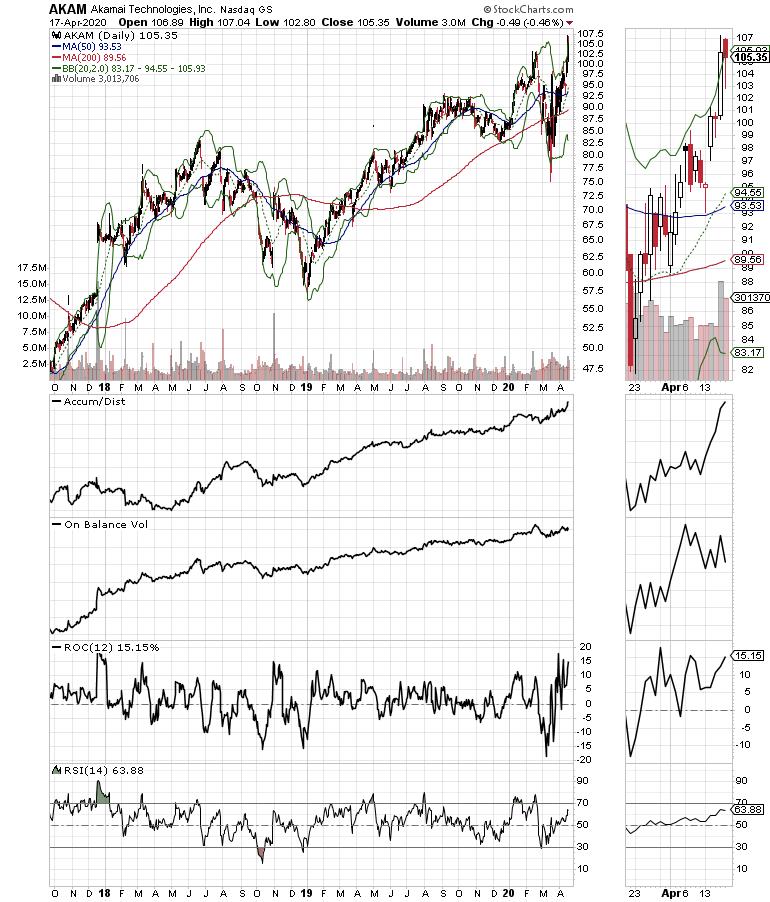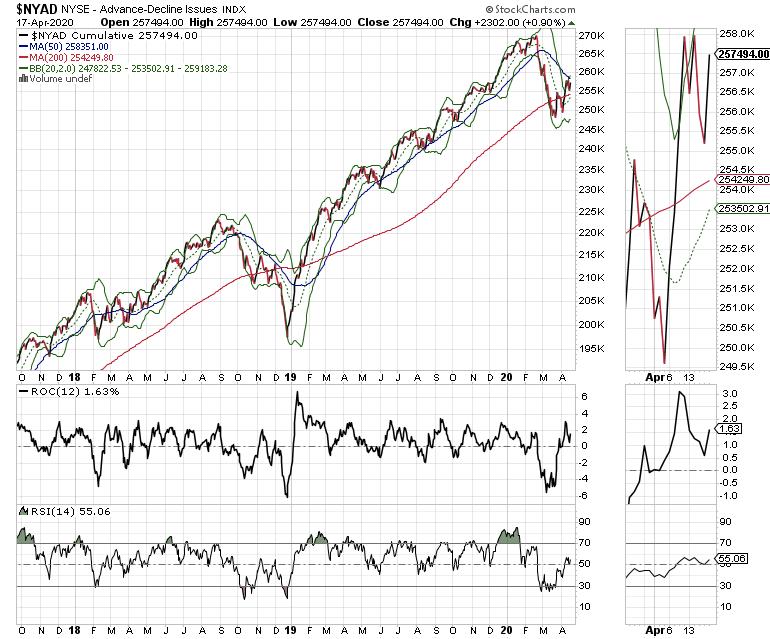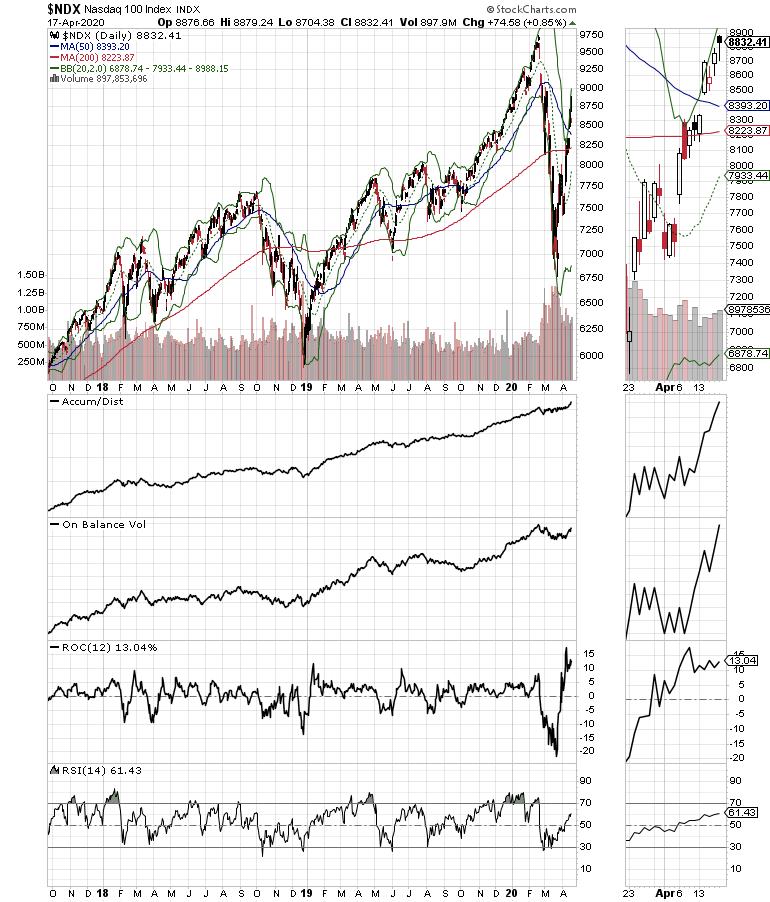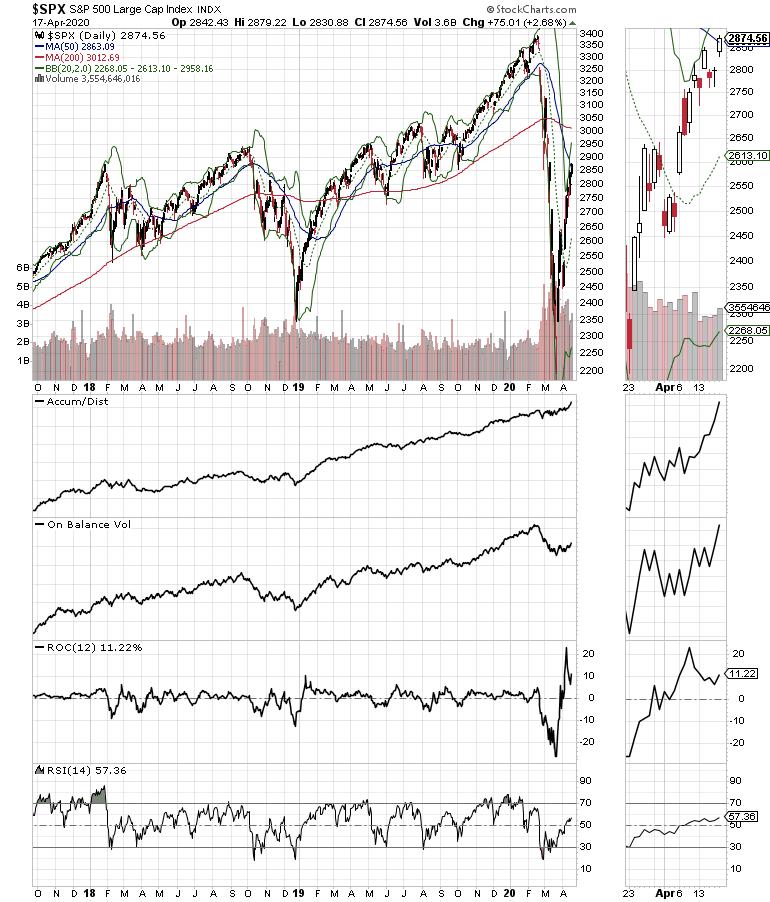I am trading this rally on the long side for two reasons: first, it is folly to fight the Fed, and second, it is equally foolish to fight the market's momentum until proven otherwise.
Moreover, and I say this with some trepidation, we may be reaching a point where the balance between the components of MEL, the complex adaptive system comprised of the stock market (M), the economy (E) and people's lives (L), is nearing a point of emergence to a new level of operation. If this is correct, then, because of the way algos are programmed, the Fed's actions are paramount.
In other words, as long as the Fed is easing, the odds favor higher stock prices. So, until proven otherwise, be prepared for the emerging new reality of the Post New Normal World.
Trading is Still Dangerous but Difficult to Avoid
Trading stocks remains dangerous. Still, as traders, the only viable strategy is to trade with the trend, as long as the trend is reliable. Certainly things could change quickly - as I've been saying for weeks - as early as the Sunday night futures open, especially after a session where the action may have easily been influenced by options expiring, such as what we saw on April 17.
Still, boosted by easy money from central banks, the stock market continues to defy the grim fundamentals of the global economy, supporting the notion that for now liquidity is winning the battle and that perhaps, as I discuss below, we are witnessing a major change in MEL.
Accordingly, there are some interesting developments worth noting:
- Trading patterns in many individual stocks are starting to return to some semblance of normalcy
- Trading patterns in the major indexes remain volatile and continue to feature wild point swings
- As earnings season develops, the focus is likely to be on the fortunes of individual companies
- Trading success will now hinge more on stock-picking and risk management, instead of just buying oversold stocks
MEL is on the Move
There are important positives and negatives unfolding in MEL. While stocks have rebounded, we have rising joblessness, stalling commerce, an increasingly dangerous geopolitical tone and a new set of rules for human interaction: social distancing, video conferencing and the possibility that face masks will become a long-term fashion accessory around the world.
Yet, even as protests appear in U.S. state capitals, we also see evidence of Complexity, the process through which orderly change occurs in the universe, slowly curtailing the activity of its disorderly cousin Chaos. Note that key agents in the system - people, governments and companies - are also adapting to the new reality of living in a world of unknown infection risk by working at home, adapting their businesses to the new rules and by looking for ways to survive and someday again thrive. Moreover, just as some people and some businesses are doing better than others, this process of adaptation is visible in the stock market, where some stocks are also acting better than others.
Moving toward the Edge of Chaos
What we are witnessing is a classic display of a complex adaptive system moving toward a point of emergence, where the optimal level of operation known as the Edge of Chaos (EOC) - the transition point between Chaos and Complexity - exerts its maximum influence. Emergence is crucial to the existence of the system, as it is followed by Coevolution, the process through which different systems simultaneously adapt to the new reality. What this means, if the current trends remain in motion, is that, in the not too distant future, we may all have to recalibrate how we look at the world, how we trade and how we live.
Moreover, whereas in life EOC is about finding solutions to coronavirus problems, in a stock or index chart it is marked by the price action along key support and resistance areas, such as the 20-, 50- and 200-day moving averages. Of these three key dividers, the 200-day is the most important, as it is a long-term dividing line between bear markets (Chaos) and bull markets (Complexity), whereas the 20- and 50-day moving averages are important dividing lines between short (20-day) and intermediate (50-day) term up and down trends. Interestingly, as I point out below, credible trading action is now taking place above the 20-, 50- and 200-day moving averages, which is clearly a positive for the stock markets (M). Now, we have to see how the economy (E) and people's lives (L) respond.
Markets May Replace Economy as Leading Edge in MEL
Indeed, my current analysis suggests that the markets are on the verge of becoming the leading component of MEL. This is due to the fact that 401 (k) plans are central to the wealth effect for many people. Thus, the stock market's rally has been a psychological positive of sorts to those who may be temporarily out of work or are working part-time.
Therefore, if the rally does not fall apart and is followed (at some point in the not too distant future) by a reasonably credible improvement in the economy, no matter how small, it could mean that MEL has emerged to a new operating level, where the action in the stock market will be the crucial factor influencing economic activity via its positive effect on the 401 (k) plan - fully reversing the traditional relationship where economic activity is seen as fueling the market's price action.
Heady theories aside, the coronavirus is a purely chaotic entity, as are all diseases. That means that its actions are predictably unpredictable. Therefore, any type of action plan for a return to normal may still face significant setbacks at any time as Chaos tries to reassert itself as the dominant macro influence in the world. What that means is that investors should have a balanced approach to trading at this point.
Translating this to action means that owning stocks is still a day-to-day, perhaps week-to-week exercise until proven otherwise. Moreover, trading small lots, keeping higher-than-normal cash levels and taking profits as they appear while using well-placed sell stops is still the best way to trade in this market.
Akamai: From the Shadows to the Sunlight in a Cloud World
Shares of Akamai Technologies (AKAM), a leading provider of cloud infrastructure and services, delivered a credible price breakout last week, as the coronavirus situation continues to increase demand for its business. Perhaps the most interesting aspect of this stock, which I recommended to premium subscribers of JoeDuarteInTheMoneyOptions.com before the breakout, is that it is not a very well-known company.

But, even so, its story is fairly compelling at the moment, and the stock has the potential to climb higher over the next few months barring an all-out return of the bear market. Consider the fact that there are still major cities, such as New York, London and Los Angeles, which are still on lockdown, with significant questions remaining about the reopening of the global economy.
Moreover, it is now plausible to consider that the explosive growth of telemedicine and teleconferencing is here to stay for the foreseeable future. What that means is that companies like Akamai, who provide the server space, software and security framework for telework and content streaming, may just be getting started in what could be a multi-quarter and perhaps longer earnings growth cycle.
Certainly, Akamai's breakout and recent brokerage upgrades suggest that there is interest in the shares. Moreover, the stock is still far from being a household name, which means that what was once an obscure, certainly well-run cloud company is about to be thrust into the limelight, which could mean an even larger following. Right now, the shares look attractive as long as they hold above the $98 support area. Earnings are due at the end of April, so it will be interesting to see what happens between now and then, as well as, of course, how the market responds to the company's earnings report. For more details about Akamai and other stocks that should profit from key changes in MEL, check out a FREE trial to Joe Duarte in the Money Options.com.
NYAD Holds above 200-day Moving Average
The good news is that the New York Stock Exchange Advance Decline line (NYAD) remained above its 200-day moving average for two consecutive Fridays. The neutral news is that it did not cross above its 50-day line, which means that we are still operating under a partial all clear.

That said, the Nasdaq 100 index (NDX) is trading well above its 50- and 200-day moving averages, with positive On Balance Volume (OBV) and Accumulation Distribution (ADI) confirming a return to a positive trend. NDX does have some overhead resistance near the 9000 area, which is likely to lead to a pause in the uptrend at some point in the not too distant future.

The S&P 500 (SPX) is slightly behind, yet also closed above its 50-day moving average (but not above the 200-DMA). Still, and this is an important point, the RSI indicator for NYAD, SPX and NDX is still hugging the 50 area, which means the market is not yet overbought and could still move higher.

The bottom line is that some parts of the stock market are doing better than others, but we are seeing a fairly well-spread-out recovery with technology leading the way higher.
Trade Individual Stocks, Not the Whole Market
We are caught in a war between Chaos and Complexity as we near the point of emergence and a potential Post New Normal world. And, while we can't control the forces of the Universe, we can certainly control our trading.
What that means is that we trade small lots and keep short term timeframes, trading day to day. If a stock is not working, we should consider cutting our losses short. If we have profits, we should consider paring down the position by fading big rallies. And, if the market turns against us, we should trade each position individually, meaning if it's working we hang on to it with well-placed stops while we sell laggards. Finally, keep higher levels of cash than usual, in order to survive any unforeseen attacks from Chaos.
I own shares in AKAM as of this writing.
Joe Duarte
In The Money Options
Joe Duarte is a former money manager, an active trader and a widely recognized independent stock market analyst since 1987. He is author of eight investment books, including the best selling Trading Options for Dummies, rated a TOP Options Book for 2018 by Benzinga.com and now in its third edition, plus The Everything Investing in Your 20s and 30s Book and six other trading books.
The Everything Investing in Your 20s and 30s Book is available at Amazon and Barnes and Noble. It has also been recommended as a Washington Post Color of Money Book of the Month.
To receive Joe's exclusive stock, option, and ETF recommendations, in your mailbox every week visit https://joeduarteinthemoneyoptions.com/secure/order_email.asp.
